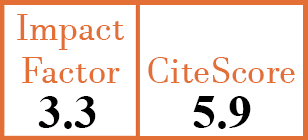Full Papers
An ultrasonographic insight into musculoskeletal manifestation in 100 systemic lupus erythematosus patients
I.H. Popov1, C. Pamfil2, M.M. Tămaș3, T.N. Onea4, I. Felea5, A. Hălbac6, N. Rednic7, S. Rednic8
- County Emergency Clinical Hospital Sălaj, Zalău, and Iuliu Hațieganu University of Medicine and Pharmacy, Cluj-Napoca, Romania.
- Iuliu Hațieganu University of Medicine and Pharmacy, and County Emergency Clinical Hospital Cluj, ERN ReCONNET Center, Cluj-Napoca, Romania. cristinapamfil.umfcluj@gmail.com
- Iuliu Hațieganu University of Medicine and Pharmacy, and County Emergency Clinical Hospital Cluj, ERN ReCONNET Center, Cluj-Napoca, Romania.
- Iuliu Hațieganu University of Medicine and Pharmacy, Cluj-Napoca, Romania.
- County Emergency Clinical Hospital Cluj, ERN ReCONNET Center, Cluj-Napoca, Romania.
- County Emergency Clinical Hospital Cluj, ERN ReCONNET Center, Cluj-Napoca, Romania.
- Iuliu Hațieganu University of Medicine and Pharmacy, Cluj-Napoca, and Department of Internal Medicine, CF University Hospital Cluj, Cluj-Napoca, Romania.
- Iuliu Hațieganu University of Medicine and Pharmacy, and County Emergency Clinical Hospital Cluj, ERN ReCONNET Center, Cluj-Napoca, Romania.
CER14944
2022 Vol.40, N°9
PI 1686, PF 1692
Full Papers
PMID: 34905481 [PubMed]
Received: 29/06/2021
Accepted : 11/10/2021
In Press: 10/12/2021
Published: 20/09/2022
Abstract
OBJECTIVES:
We aimed to investigate the prevalence of US findings in the hand joints and related tendons and explore clinical and laboratory associations in SLE patients of the typical lupus clinic.
METHODS:
One hundred consecutive SLE patients were enrolled in the study. Using B-mode and Doppler US, bilateral wrist, metacarpophalangeal and proximal interphalangeal joints were examined for synovitis and erosions, as well as for signs of hand tenosynovitis.
RESULTS:
US detected synovitis (grade 1–3) in 75% and erosive changes in 25% of the cohort. We found that clinical examination underestimated grade ≥2 synovitis by 13%, while US detected SH grade ≥2 in 10% of asymptomatic patients. The overall inflammatory burden, reflected by the US score, was associated with disease activity (respectively with CPR, SELENA-2K, MS-BILAG, and hypocomplementemia), as well as the presence of bone erosions. Rhupus patients had higher inflammatory markers, significantly more synovial hypertrophy, more erosions, more grade 3 tenosynovitis, and were more likely to receive methotrexate (p<0.001) than patients with SLE arthritis, while patients with Jaccoud’s arthropathy were more likely to accumulate damage. The dominant hand exhibited more inflammatory changes (respectively synovial hypertrophy grade ≥2) at both the wrist and MCP joints; however, handedness was not associated with structural damage.
CONCLUSIONS:
In conclusion: 1. joint involvement in SLE is frequent and underacknowledged; 2. the overall inflammatory burden is associated with systemic disease activity and joint damage; (3) destructive arthritis is more likely to occur in the context of concomitant RA or within an “RA-like” subtype of SLE arthropathy; 4. hand dominance is associated with synovitis, but not structural changes; 5. US assessment may help tailor the management of joint involvement, thus preventing joint damage and disability in SLE patients.



